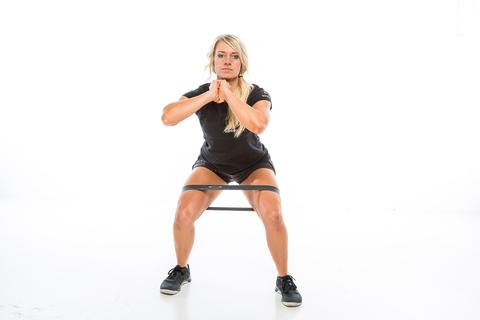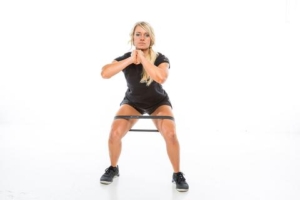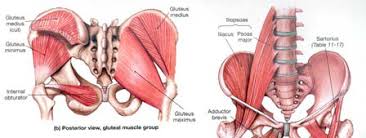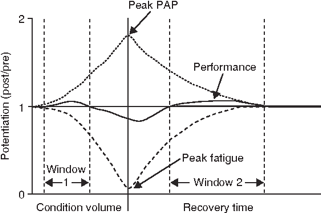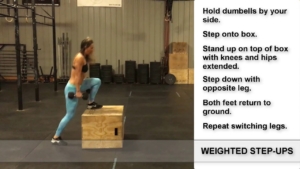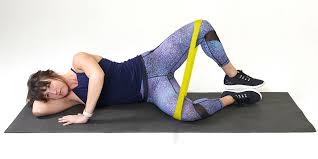Are Banded Sidesteps Doing What We Think They Are Doing?
With the initiation of a third lock down in the UK we thought it would be a great idea to engage our readers in some motivating posts to help keep you motivated. We welcome back APA coach Konrad McKenzie with a weekly guest post.
This Lockdown 3.0 I tasked myself with diving further into Anatomy to give me even more clarity as to what exercises I am doing, why I am doing them and how I can vary them to get the response I want. I quite like this personal auditing and I will be doing this more regularly.
The exercise I want to discuss on today is the popular Glute Band Side Step, a popular exercise used to “activate” or “wake up” the Gluteal muscles. Whilst there is research supporting Gluteal Amnesia, your glutes simply do not switch off. Reciprocal inhibition (Sherrington’s law) teaches us that overactive muscles could cause a reflexive relaxation on opposing muscles. In this case the over activity in the hip flexor complex may cause underactivity in the Gluteal. Lastly, low levels of glute activation and coordination may lead to altered biomechanics and extra stress placed through the spine, as the hamstrings and lower back are asked to compensate in hip extension.
The ”prehab guys” suggest that prolonged sitting may cause slight damage to the nerve supplying the glute however this is not significant enough to cause muscular atrophy in most cases. Moreover, your glutes do not simply turn off otherwise you would probably be a pile of human on the floor, due to the glutes’ role in keeping us bi-pedal humans upright.
The role of the Glutes in Athletic performance
The gluteals are the primary hip extensors, external rotators and abductors of the lower body. In athletic activities such as sprinting, jumping and throwing the glutes play a large role in hip extension. During sprinting it is said that the glutes play a vital role in hip extension velocity during acceleration and in the stance phase of sprinting.
When performing exercises such as landing from a box on a single leg the hamstrings contract the hardest and the earliest but the Glute Medius performs a higher degree of muscular work in the frontal plane. Additionally, knee valgus seen in lower body functional tasks such as bilateral or unilateral squatting may give us an indication that the Glutes are under performing.
The benefits of having strong gluteal muscles are now well established with more people more than ever hip thrusting, bridging or performing the glute banded sidewalks. But, is this exercise doing as much as we think it is doing? Is this an exercise being given, perhaps, too much of the limelight? Today I want to dive into this.
Banded sidewalks and glute activation drills
It is apparent that banded side step works the hip in abduction and external rotation. Not only does the band stress the stepping limb, it challenges the standing limb too, as the athlete is asked to perform a lateral walk. Some great research by Lewis et, 2018 has suggested that placing the band around the feet increases both Glute Med and Max activation
Glute activation is quite a common theme in an athletes warm up, the idea is that the athlete spends part of the warm up performing, as an example, two sets of banded sidewalks for 15 repetitions to increase Gluteal activity, or in some case “wake up the glutes”. But, is this too simplistic? And does the side band walk have an increased performance outcome?
Whilst, I take everything with a pinch of salt, the more I learn is that what’s occurring is a result of a pre-fatigue and whilst it may be great for an athlete to feel their glutes, I am not sure it helps with performance outcomes, such as fixing knee valgus. Some research even suggests that pre fatiguing muscles leads to muscle activation in the synergistic muscle groups as opposed to the specific muscle you are targeting!
The aforementioned leads me onto the next topic post activation potentiation (PAP) which is a short term improvement in performance as a result of a conditioning exercise. For example, a countermovement jump (CMJ) and a back squat.
“A phenomenon by which the force exerted by a muscle is increased due to its previous contraction” (Robbins, 2005)
The conditioning exercises is said to place the muscles in a “potentiated” or “Activated” state thus, increasing (in this case) CMJ performance. Whilst the research of this is quite mixed, heavy loads (> 80% of 1RM) appears to be more effective than using lighter loads. If we are talking about activation, then this is quite a contrast. Whilst I am not throwing the baby out the bath water my question is.
“What assumptions are we making?”
Ok so do we not do this exercise?
Firstly, you will hear this in the strength and conditioning communities quite a bit. Context is king. There have been great research on side banded walks particularly in the rehab settings to help rewire neural pathways or to teach a young athlete muscle awareness. I just do not expect a magical solution from this in athletic performance.
Before I dive into specific exercises, I want to take you back to basics and suggest that simply getting your glutes strong, increasing the your hip mobility and stiffness in your core will go a long way in getting in enhancing performance outcomes from the Glutes and enhancing cross sectional area (size). Great exercises include Barbell hip Thrusts, high step ups and good old fashioned back squats, performed with good technique.
Structural adaptation
We know that in order to create structural adaptions we can:
- Increase Cross sectional area
- Increase muscle activation
- Increase muscle- tendon stiffness
The literature around PAP, forced me to think that high volume, low load was probably not adequate in the “activation” of these muscle groups for performance enhancement. So how could I alter what I do to potentiate these muscles? Here are some ideas (I would also love to hear yours)
- Fewer repetitions
- Higher intensity
- Yielding Isometrics
Whilst these are not revolutionary or specific exercises it gives something to think about, for example take the typical clamshell exercise pictured below
There are ways that we could modify this, perhaps, by using a heavy plate loaded six second isometric or using a very heavy band that can only be pushed for 3-5 repetitions. With some of my full-time athletes I would typically use a heavier plate loaded isometric hold to “activate” the muscles of the glutes, which is progressed through time.
On a final note, I want to stress that I am not anti-band sidewalks, I just think they need to be taken a bit more lightly for activation purposes. They certainly have their place in clinical rehab or as a teaching method, to feel the muscle but this comes down to your “why”.
Thanks for reading guys,
Konrad McKenzie
Strength and Conditioning coach.
Liked This Blog?
You might like other blogs on this topic from APA:
APA review of the Middlesex Students S&C conference 2014
The Dubious Rise of the Corrective Exercise ”Pseudo-Physio” Posing as a Trainer- My thoughts
as well as two recommended articles:
This article on weak Glutes during Squatting
And this one on Exercise Modifications
Do you feel that this would be a perfect time to work on the weak links that you have been avoiding? The things that you know you should be doing that you keep putting off? Would you like us to help you with movement screening and an injury prevention program? Then click on the link below and let us help you!
? TRAIN WITH APA ?
Aspiring Pro Training Support Packages
Follow me on instagram @konrad_mcken
Follow Daz on instagram @apacoachdaz
- If you’re not subscribed yet, click here to get free email updates, so we can stay in touch.
- Share this post using the buttons on the top and bottom of the post. As one of this blog’s first readers, I’m not just hoping you’ll tell your friends about it. I’m counting on it.
- Leave a comment, telling me where you’re struggling and how I can help
Since you’re here…
…we have a small favor to ask. APA aim to bring you compelling content from the world of sports science and coaching. We are devoted to making athletes fitter, faster and stronger so they can excel in sport. Please take a moment to share the articles on social media, engage the authors with questions and comments below, and link to articles when appropriate if you have a blog or participate on forums of related topics. — APA TEAM

